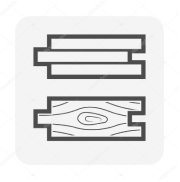Wall Mouldings

Anti Bacterial

Joint Free

Non porous
Wall mouldings are decorative panels which are widely used in designing upscale residential & commercial projects. This panel are mixture of charcoal & polystyrene proportionately. Wall mouldings incorporates strength to the product whereas styrofoam made from recycled thermocol make the product resistant to warping in addition, Wall Mouldings are waterproof & fire retardant. They can be used on inside as well as outside surfaces & can be painted.
This new age material is launched in India.
Length : 10 feet
Thickness: 12 mm – 25 mm
Frequently Asked Questions
Wall moulding, commonly referred to as trim or moulding, can be constructed from a number of different materials, such as wood, plaster, PVC, or composites. Because of its adaptability and simplicity of usage, wood is one of the most widely used materials for wall moulding. Pine, oak, cherry, and maple are just a few of the many types of wood that can be used to create moulding.
Wall moulding is used to add decorative detail to a space and improve its aesthetic appeal. The use of moulding can produce a range of effects, including framing windows and doors, adding visual appeal to plain walls, and giving a space an architectural feel. Moulding can be used to conceal holes and flaws between walls and floors or ceilings in addition to its ornamental application.
Probably the most prevalent sort of moulding is baseboard, which is often inserted where a wall meets the floor at the bottom. Baseboard mouldings may both soften the transition between the wall and the floor and protect the wall from damage like scuffs and scratches.
Moulding is significant for a number of reasons. First off, it may give a space more personality and visual appeal, making it feel more polished and inviting. Additionally, moulding can give a room a more finished appearance by helping to conceal flaws or gaps between walls and other surfaces. Additionally, mouldings can assist shield walls from dents or scuffs brought on by furniture or foot movement.

















